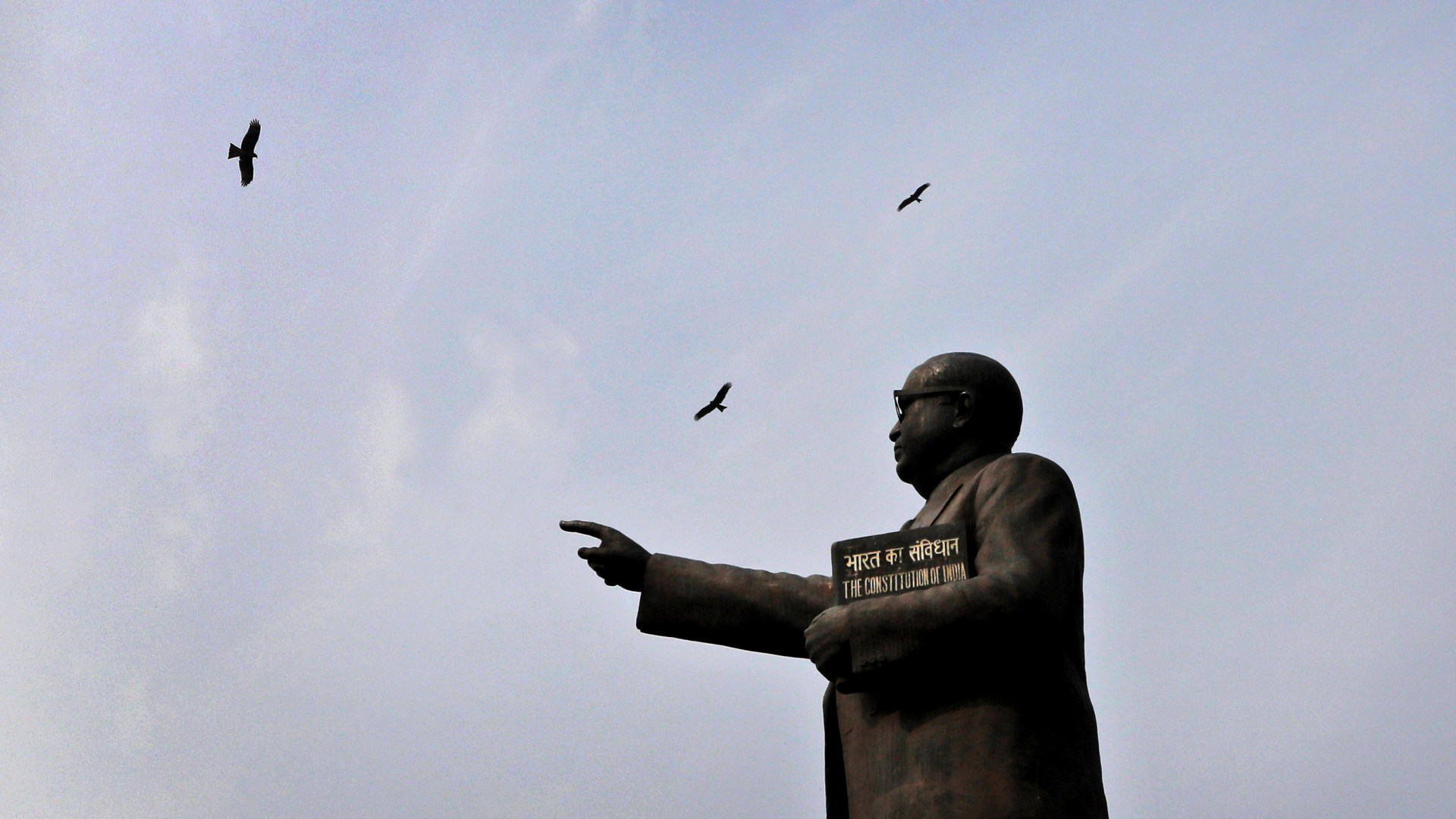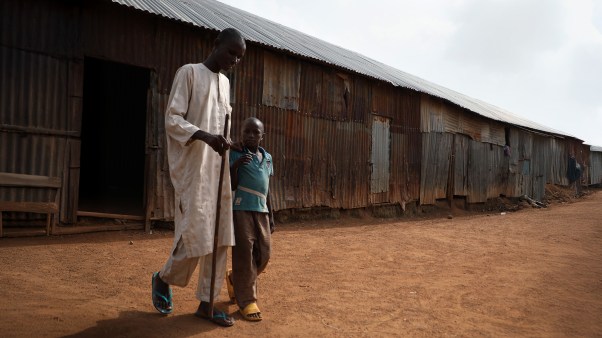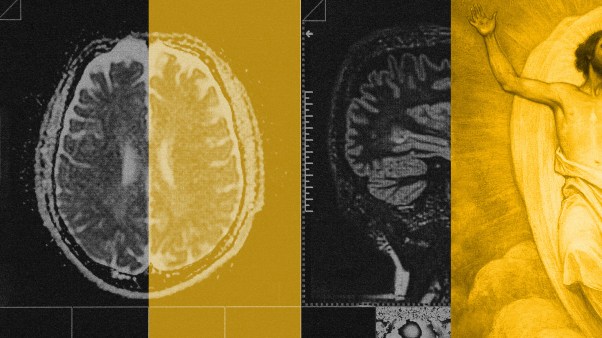Last month marked the 67th anniversary of India’s most famous Dalit’s conversion to Buddhism.
“Though I was born a Hindu untouchable, I shall not die as a Hindu,” wrote Bhimrao Ramji Ambedkar, who devoted his life to abolishing the caste system and who embraced his new faith just two months before his death in 1956.
The Dalit community cherished the activist and politician so much that half a million of his followers followed him to Buddhism. But Ambedkar was not always certain he would leave Hinduism for this other Eastern faith and he spent years engaging with the Bible and Christian leaders. A friend who served as a Methodist bishop later said that Ambedkar had twice asked to be baptized, and when in Delhi, he attended an Anglican church and was friends with its vicar.
“I have had a great impact on my mind of two great personalities, Buddha and Christ,” he said at a Christian gathering in 1938. “I want a religion which could teach us to practice equality, fraternity, and liberty.” But though he admired Jesus, Ambedkar was disappointed by the blind spots church leaders appeared to have toward his community and ultimately found numerous tenants of Buddhism that spoke to the Dalit condition.
Today, while many Dalits have rejected Hinduism for Christianity, millions more have converted to Buddhism. On April 14 of this year, 50,000 Dalits and individuals belonging to tribal communities participated in a Buddhist mass conversion ceremony on Ambedkar’s 132nd birthday.
Christians seeking to reach those in this community today would do well to remember Ambedkar’s praise of Buddhism—and his critiques of the church. Many of these feel sadly still true today.
Why Buddhism?
Born in 564 B.C., Buddha spent a significant portion of his life in India combatting chaturvarna, an ideology that would eventually evolve into the caste system. He staunchly opposed the rigid hierarchical social structure that classified individuals based on birth, challenging the notion that one’s status should be predetermined by factors such as caste, or varna.
A central theme in Buddhist teachings is the belief in the equality and inherent worth of all individuals, regardless of their social background. Because of this, Ambedkar saw Buddhism as a tool to challenge the caste system and attain social equality, which resonated deeply with the Dalit community.
Ambedkar spent considerable time comparing Buddha with Jesus, Mohammed, and Krishna, noting many of his observations in his essay, “Buddha and the Future of His Religion,” which he wrote in 1950, six years before his conversion. He noted Buddhism’s unique elements, such as:
- The core of Buddhist faith lies in morality rather than a deity, distinguishing it from other religions where God holds that role.
- Jesus asserted his divine identity as the Son of God and emphasized the need to recognize him as such for entry into God’s kingdom; Mohammed taught that salvation required accepting him as the final messenger of God; and Krishna declared himself as Parameshwara, the God of Gods. But Buddha was a regular man, who chose to live and preach as an ordinary individual.
- Buddha’s religion was rooted in reason and experience. He urged followers not to blindly accept his teachings. He allowed for modification or abandonment of his teachings if they no longer applied.
Ambedkar’s overall case for Buddhism rested on his deeper conclusions about religion: society needed morality to function; religion needed to be in accord with science and also needed to recognize “the fundamental tenets of liberty, equality and fraternity,” and it could not “sanctify or ennoble poverty.”
“So far as I know, the only religion which satisfies all these tests is Buddhism,” he wrote.
[Buddha] taught as part of his religion, social freedom, intellectual freedom, economic freedom and political freedom. He taught equality, equality not between man and man only, but between man and woman. It would be difficult to find a religious teacher to compare with Buddha, whose teachings embrace so many aspects of the social life of people, whose doctrines are so modern and with main concern to give salvation to man in his life on earth and not to promise it in heaven after he is dead!
Today embracing Buddhism has allowed Dalits to reject the oppressive hierarchical structure of the caste system that has marginalized them in society, while simultaneously staying connected to their historical and cultural roots, since Buddhism began in India. (Though Christianity arrived in the first century, the religion is not indigenous to India.) Further, though the faith did not have a historically robust political presence, Ambedkar’s influence led to the rise of a neo-Buddhism movement that helped further fight for Dalit rights and representation.
Why not Christianity?
During his struggles against caste and untouchability, Ambedkar at one point considered encouraging Dalits to convert to Christianity. In order to defend themselves from the Hindu community, “Dalits had to think in terms of supplementing their strength from the outside,” wrote Anand Teltumbde, in Strategy of Conversion to Buddhism: Intent and Aftermath. “This strength could come only through merging with some other religious community, by converting to its religion.”
However, Ambedkar ultimately rejected this idea, recognizing that even within India, Christianity was not exempt from caste divisions. He likely understood that Dalits converting to Christianity wouldn’t alter their social standing; they would still be viewed as untouchables, not just by Hindus but also by those of higher castes.
Further, Ambedkar himself had faced discrimination from Christians during challenging times. After studying in the West, Ambedkar returned to India in 1918 and moved to Baroda (Vadodara) in Gujarat. He immediately ran into housing troubles; all the hotels had Hindu owners who did not allow untouchables. After he was forced to leave a hotel specifically for Zoroastrians, he asked a Christian friend to accommodate him in his house. The friend said that he would have to ask his wife.
“He and his wife came originally from a family which was Brahmin by caste and although on conversion to Christianity the husband had become liberal in thought, the wife had remained orthodox in her ways and would not have consented to harbour an untouchable in her house,” he later wrote.
Echoing Ambedkar’s experience, another prominent Dalit leader, the former speaker of the Indian Parliament’s lower house, was denied housing by an Indian Christian in London due to her Dalit identity.
These actions challenged Ambedkar, an avid student of the Bible who had a vast collection of biblical literature. In a 1938 speech, he had sharp words for missionaries and the Christian community in general, calling for Christians to go beyond religious conversion to address the broader issues faced by the Dalit community.
“Missionaries feel they have done their duty when they convert an untouchable to Christianity,” he said. “They do not look after their political rights.”
“The Christian missionary has never thought that it was their duty to act and get the injustice that pursues the untouchable, even after his conversion to the Christianity, removed. That missions should be so inactive in the matter of the social emancipation of the untouchable is of course a very sad thing. But far more painful is the inaction of the untouchable who became a convert to Christianity. It is the saddest thing. He continues to suffer from the Hindus the same disabilities which were his lot before conversion,” wrote Ambedkar, as quoted in volume 5 of his Speeches and Writings.
In Ambedkar’s view, the division between the secular and sacred within the Indian Christian community had largely kept them away from actively participating in Indian politics. Ambedkar urged Christians to actively engage in democracy and encouraged them to participate in politics and in government service.
Ambedkar highlighted the historical absence of Christians in Indian politics and emphasized the vital role of political support for the church’s institutional survival, noting that despite being labeled as ignorant, many untouchables had actively engaged in politics, holding 15 seats in the Legislative Assembly (at the time of his writing his speech), and benefiting from affirmative action scholarships and government hostels, which housed students who were poor, Dalit, or from a tribal background.
But at the same time that Dalits began to politically represent themselves and assert their rights, Christians failed to organize politically and had virtually no representation among the judiciary, wrote Ambedkar. In the absence of this power, they had no means of rectifying the injustices experienced by Christian untouchables.
Ambedkar placed much of this blame on the shoulders of educated (and higher caste) Christians, who he deemed responsible for building solidarity and for leading a political movement on behalf of Dalit Christians.
Ambedkar also questioned why Indian Christians had become inconspicuous in their own nation, despite the fact that they were overrepresented as educators and the educated. One of his theories concerned Christian Dalit and tribals’ dependence on foreign missionaries for economic sustenance. If they depended on the government, they would need to mobilize, agitate, educate, and organize their masses for effective political action. Without such organization, governments would not address their needs, leaving them marginalized in public life due to their lack of engagement in current affairs.
What Christianity does offer
For most Dalits, their fundamental existential question is the identity placed on them by the caste system. The historic Indian church and Western missionaries emphasis on Christianity’s salvation image and forgiveness from personal sin have often felt peripheral or like secondary concerns. For Dalits, too often, Christianity doesn’t present a trip to the Promised Land, or of liberation from physical suffering, but to a wonderful afterlife, that is Swarga or Indraloka (heaven).
Though Christians in India may not have been clear to Dalits about where God’s heart stood toward their condition, the Bible itself is clear. As the first chapter of the first book of the Bible states, “So God created mankind in his own image, in the image of God he created them; male and female he created them” (Gen. 1:27).
While Christianity can indeed offer Dalits the answer to their deepest questions about who they are, the church would do well to reflect on Ambedkar’s words. Even after all these decades, his prophetic voice continues to echo, urging the Indian Christian community to address broader issues and systemic problems. To this day, Dalit Christians have still not been able to secure their constitutional rights to affirmative actions, and the caste system is unfortunately pervasive in sections of the Indian Christian community.
In the light of this reality, the call for justice and a pursuit of the values of the kingdom of God become paramount. The church of Christ in India must continue to pursue the values of the kingdom of God and strive for justice for Dalits in India, especially Dalit Christians, and strive for a society where constitutional rights are upheld and the ubiquitous caste system is dismantled.
Ram Surat, a doctorate, has spent 27 years sharing the vision and mission of Bhimrao Ramji Ambedkar and fellow Indian anti-caste social reformer Jyotirao Govindrao Phule. Currently based in Bihar, India, he champions the cause of caste reconciliation among the Dalit and OBC communities in North India.
Surinder Kaur is Christianity Today’s South Asia correspondent.










